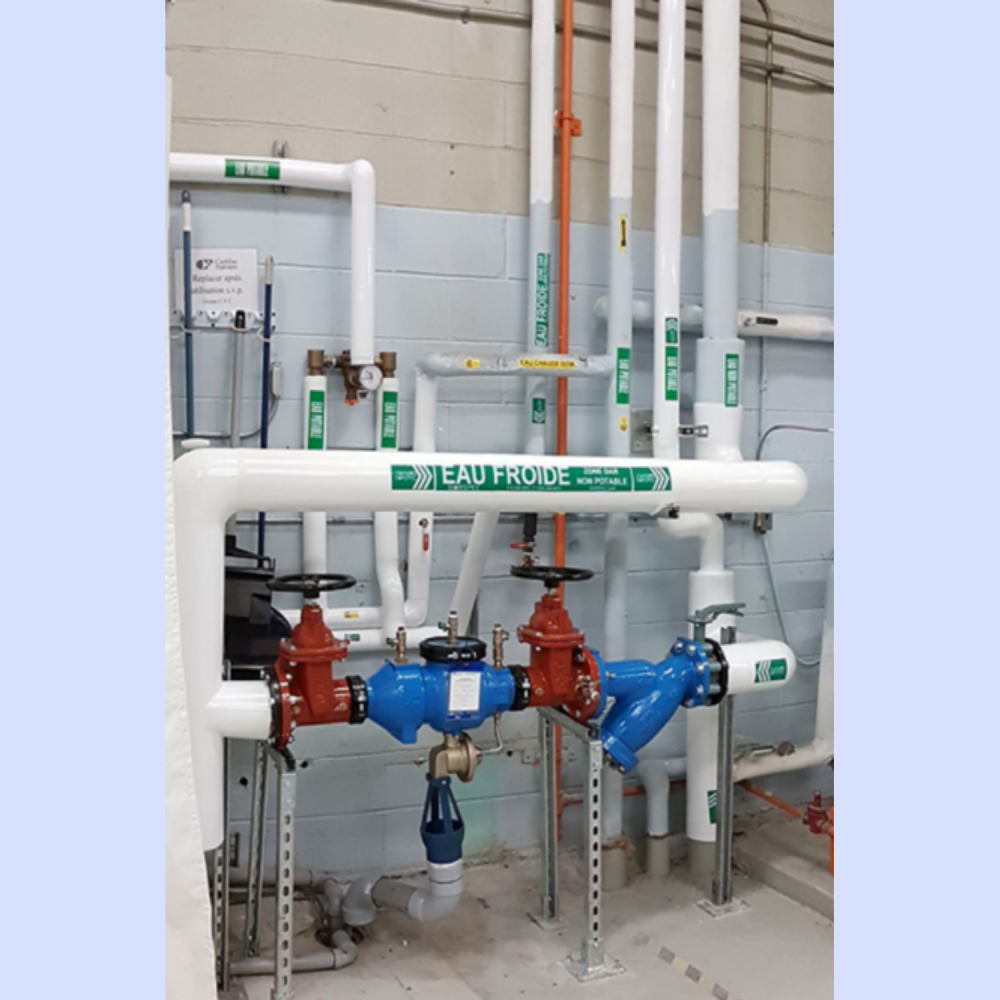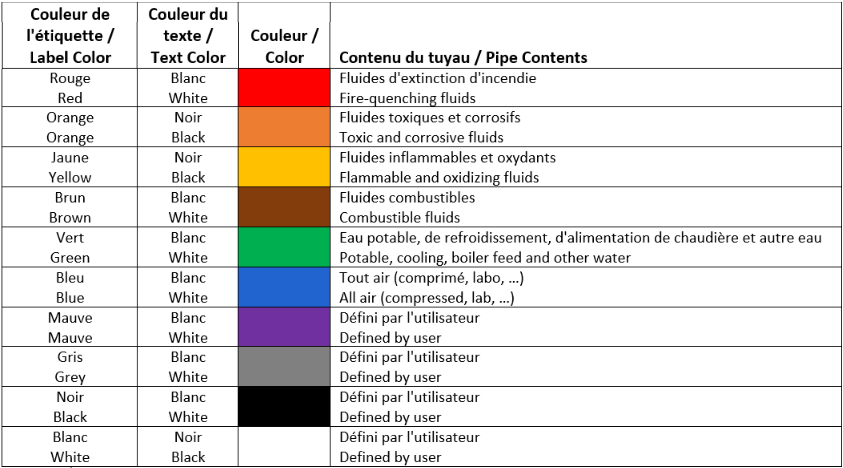
How to identify the content that circulates in a piping network or its direction of flow? The marking is there to make our job easier!
A simple, but essential, practice to avoid problems.
An incorrectly identified or simply unidentified pipe poses a danger to employees.
In fact, in the event of an emergency and emergency intervention, there should be no room for doubt when it comes to knowing which fluid (gas or liquid) passes through which pipe. Imagine the repercussions of an accident where you cannot act right away because you are not sure what is in your pipes...
Thus, a small simple gesture, such as marking, will significantly reduce the risk of accidents. Because it does not just happen to others!
The identification of piping is regulated; Canadian laws require it in sections 2.2.1.3 and 2.7.2.1 of the National Plumbing Code (1). However, in the event of an infringement, no penalty is provided for... Yet, as you have understood, all companies should use it.
Indeed, a bad marking complicates the maintenance or renovation work on these pipe networks. This can lead to a waste of time, money and in some cases a faulty engineering design.
In summary, using pipe markers to identify the pipes is essential to:

If your objective is to carry out a project in a building, marking must be the final step and should in no case be neglected. This is a practice that will ensure the safety of your employees and greatly improve the efficiency of your maintenance teams.
For more details on pipe marking, contact us.
(2) https://www.iso.org/standard/71570.html
(3) A13.1 - Scheme for the Identification of Piping Systems - ASM
We use cookies to understand how you use our site and to improve your experience. This includes personalizing content and advertising. By continuing to use our site, you accept our use of cookies, terms and conditions, privacy policy. Confused? Send us an e-mail.
I acceptWe use cookies
Respecting your privacy matters to us. We use cookies to personalize our content and facilitate your digital experience. Some cookies may be collected with your consent.
Essential
Essential cookies help make a website usable by enabling basic functions such as page navigation and access to secure areas of the website. The website cannot function properly without these cookies.
Performance
These cookies enable us to analyze navigation on our sites and improve their operation.
Customization
Preference cookies enable a website to remember information that modifies the behavior or appearance of the site, such as your preferred language or the region you are in.
Targeted advertising
These cookies help us limit the number of times you see an advertisement, personalize our offers and services according to your centers of interest, measure the effectiveness of an advertising campaign, and so on. They may be shared with our partners.
We use cookies
Respecting your privacy matters to us. We use cookies to personalize our content and facilitate your digital experience. Some cookies may be collected with your consent.